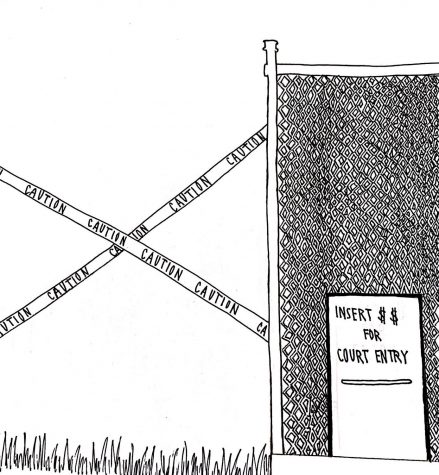Marin County reopens, but only for the wealthy
How the reopening process has favored those already fortunate
May 29, 2020
On April 29, Marin County announced one of its first steps towards reopening. Out of a plethora of activities and services waiting to open, the county chose two outdoor activities to reopen first: tennis and golf. While progress is progress, the decision to open these particular activities over the opening of parks, playgrounds and beaches highlights an underlying issue in our society, an issue that has been part of this country since its inception: favoring the white and wealthy.
It is undeniable that tennis and golf are both activities in which the participants are disproportionately affluent. In fact, according to Pledge Sports, a 2010 study by the U.S. Tennis Association revealed that the average season as a professional costs a player around $143,000 in expenses. While the majority of people playing tennis and golf in Marin are not professionals, those who enjoy the sports are typically more wealthy.
The financial demographics of these sports are clear. According to the Tennis Industry Association (TIA), 38 percent of tennis players live in a household with an income above $100,000. To an even greater extreme, the average golfer’s household income is $100,980, and one in three golfers earn a household income above $500,000. Not to mention, the average golfer owns three cars, takes an international trip approximately once a year and dines out at least once a week, according to Bench Craft.
Yet another issue with the decision to open up tennis and golf first is that it favors Caucasians. According to the TIA, 68 percent of those who play tennis describe themselves as Caucasian. Additionally, a mere 20 percent of golfers belong to a minority group. This indicates that it is likely that those who have access to these activities will be largely white.
What makes the decision to open up these activities first even more illogical is that those who are most at risk for the coronavirus are typically more likely to participate in these activities. The average age of a golfer in the U.S. is 54 years old. Vineet Menachery, an immunologist at the University of Texas Medical Branch has been studying the effect of coronaviruses on aging immune systems. He spoke out on the effects of age on mortality in an article for the American Association of Retired Persons.
“As you get older, your lungs are not as elastic or as resilient as when you’re younger. Those kinds of things, coupled with any kind of health issue you might have, trend toward this loss of airway function and respiratory function,” Menachery said.

Because of the correlation between increased death rates and advanced age, it would seem foolish for the older populations to even participate in these activities as it puts them at higher risk. Knowing this, why would the county first open up activities catered to this population?
The answer is relatively simple. Although perhaps not intentionally, the Board of Supervisors within Marin County have made a decision that has benefited their very own demographic. Of the five district supervisors, all are caucasian and over the age of 40.
Although the county’s decision to open these facilities first contains inherent bias, tennis and golf do mostly allow for social distancing. Parks, playgrounds and beaches are more difficult to monitor and have more overlapping surfaces and closer contact. But so do the walkways, hiking trails, restaurant lines and countless other activities already deemed essential and allowed. Additionally, what makes the decision to open up these activities worse is that Marin County, in company with a lot of other Bay Area counties, has decided to announce that anything not accessible by foot or bike should not be allowed. Unsurprisingly, more affluent communities tend to have more available outdoor recreational spaces, including golf and tennis courts, providing yet another disadvantage to lower income communities. This has led to more cramped populations within the limited spaces available in Northern Marin.
There have been 291 cases of coronavirus in Northern Marin, where the average household income is $87,811 according to Data USA, compared to only 46 cases in Central Marin, where the average household income is $130,970 as of May 27. In Northern Marin (San Rafael and Novato), there are currently four parks and pathways available, compared to the 14 parks and pathways available in Central Marin (Kentfield, Corte Madera and Larkspur). To make matters worse, the population of Northern Marin stands at 114,359 whereas the population in Central Marin is 28,615. This has led to undeniable disparities in the contraction of coronavirus.
Although there is no clear cut solution, the most feasible option at this point in time would be to remove rules about having to walk or bike to reach the desired location. Because there are so few parks and pathways in Northern Marin, opening up their range would allow for fewer crowded areas and help decrease the disease transmission in these districts. The choice to limit activities to tennis and golf was one that catered to those making the decision. In the future, it is extremely important for those in charge of these decisions to consider all demographics of the county. The implications of the choices already made have created numerous problems for certain communities. In every effort to return back to normal life, every person must be considered in the process.







